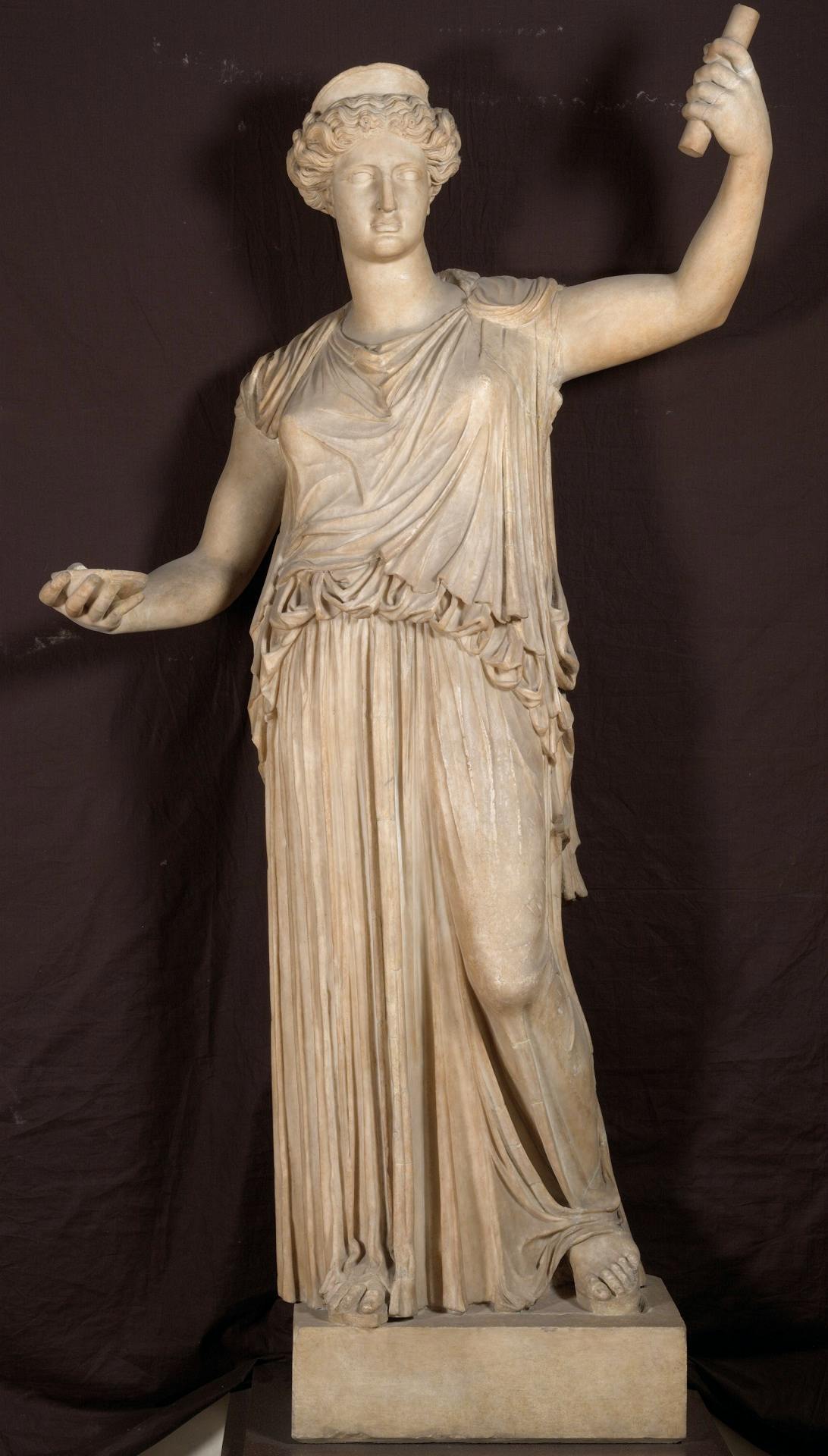Demeter
Roman art
The work, which arrived in Florence in 1569 as a gift from Pope Pius V to Francesco I de' Medici, has notable additions to the arms and the left hand, as well as to the toes of the right foot; the right hand and the left foot are antique, as is the body of the statue, while the neck and the head are modern. The female figure, probably a goddess of matronly character, slightly bends her left leg, which appears under the long, light garment (chiton), while on her shoulders she wears a peplos covered in turn by a cloak. The left arm, raised high, was perhaps originally holding a sceptre or torch. Although the identification of the subject is debated (Hera, Hestia, Latona), there is a tendency today to recognise an effigy of Demeter, the lady of the harvest and protector of the crops, daughter of Cronus and Rhea, in an elaboration of the imperial age that takes its cue from a Greek archetype datable between 420 and 300 b.C.
A. Romualdi (a cura di), Studi e restauri. I marmi antichi della Galleria degli Uffizi, III, Firenze, Polistampa, 2010 (con contributi di E. Bazzechi, La Demetra degli Uffizi, pp. 76-91) e bibliografia precedente.
